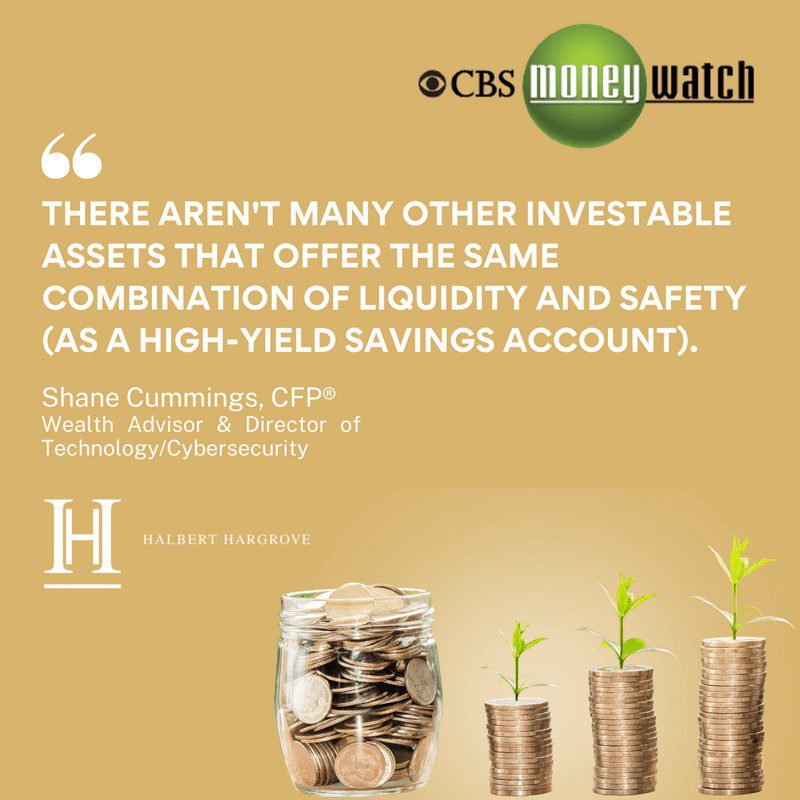By Joshua Rodriguez, CBS News featuring Shane Cummings, CFP®, AIF®, Wealth Advisor & Director of Technology/Cybersecurity
The Federal Reserve has raised its target federal funds rate 11 times in the last two years. As a result, long-term certificates of deposit (CDs) and high-yield savings accounts currently offer the opportunity to earn impressive returns. Of course, both of these savings vehicles come with pros and cons.
For example, high-yield savings accounts give you a way to earn strong returns while maintaining access to your money. These accounts usually allow you to make withdrawals up to six times per month. They’re also usually FDIC- or NCUA-insured up to $250,000. On the other hand, high-yield savings accounts have variable interest rates. Therefore, you can’t use them to lock in today’s impressive returns for the long term.
Long-term CDs, on the other hand, are usually either FDIC- or NCUA-insured for up to $250,000, making them safe savings vehicles. They also give you the ability to lock in today’s high interest rates for years to come. On the other hand, you must agree to keep your money in your CD for the full term — and for long-term CDs, that’s typically somewhere between two and five years, but can be as long as 10 years. If you access your funds early, you may have to pay a penalty.
But is a high-yield savings account or long-term CD the better option for you? The answer depends on your savings goals.
Why a high-yield savings account may be better than a long-term CD
High-yield savings accounts are powerful financial tools. Here are a couple of areas where they stand out compared to long-term CDs:
Accessibility
High-yield savings accounts are typically more accessible than CDs. You generally won’t have to worry about closing your account early or paying any potential penalties when you need to access your money. In fact, you’ll generally be able to withdraw money up to six times per month. When you save with a CD, your access is limited until the end of the CD’s term.
Take advantage of increasing interest rates
High-yield savings accounts come with variable interest rates. That’s good news any time rates are on the rise — as they have been for nearly two years. When an interest rate increase takes place, your high-yield savings account interest will likely go up, too.
That’s not the case for CDs. When you open a CD, you lock in today’s rate. Sure, that means you don’t have to worry about any rate declines, but it also means you don’t get to take part in any rate hikes.
Who a high-yield savings account is best for
A high-yield savings account is the better option if you want to earn a bigger return on your emergency fund. The simple fact is that you never know when an emergency is going to happen. When one does, you’ll need quick access to your money. And, high-yield savings accounts offer interest returns while giving you the ability to tap into them when you need to.
Moreover, when you nest your emergency fund in a high-yield savings account, you can rest assured that your money’s safe. After all, these accounts generally come with FDIC or NCUA insurance for balances up to $250,000.
High-yield savings accounts are also a compelling home for your other short-term savings.
“There aren’t many other investable assets that offer the same combination of liquidity and safety” as a high-yield savings account, says Shane Cummings, CFP, CEPA, AIF, wealth advisor and the director of technology/cybersecurity at Halbert Hargrove.


